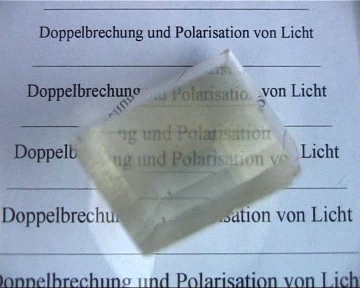
Fig. 1: Phenomenological introduction
Starting from a phenomenological observation we systematically examine and ana-lyze the double diffraction in the video on “Birefringence and Polarization in Calcite”. The movie conceived for teaching presents a vivid linkage of real experiment and theoretical knowledge from the textbooks.
The experiment “Birefringence and Polarization in Calcite” examines the direction dependency of the velocity of propagation of light in non-isotropic crystals. Basic concepts are intro-duced and polarization of light-bundles is in-vestigated.

Fig. 1: Phenomenological introduction
Thus it ties in with the textbooks and offers descriptive and motivating access. The experimental setup is revealed with stop-motion technique (Fig. 2).
So, all components are presented step by step and explained in their functionality. In doing so, the viewer can access the experiment easily. Each component of the setup is shown enlarged and thereby easy to identify.
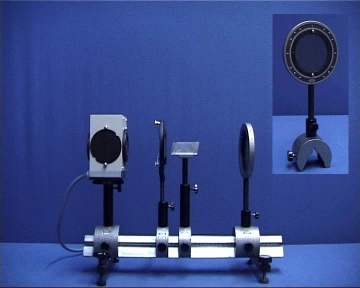
Fig. 2: Setup (f.l.t.r.: Hg-spectral-lamp, aperture plate, calcite-crystal, analyser)
One recognizes, that only one light-bundle is entering the calcite, but two are leaving.
The first noted result is the splitting of the light inside the crystal.
Next, the polarization of the leaving beams is analyzed. Therefore, the analyzer is rotated until one, then the other light-point disappears. The according angles are noted graphically. (Fig. 3)
The light intensity changes depending on the angle of the analyzer.
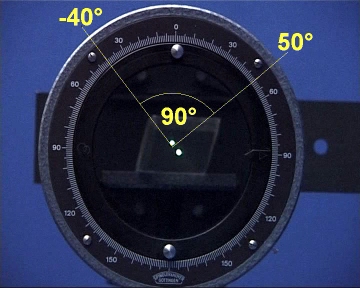
Fig. 3: Polarisation of the light beams in correlation
To help the viewer to understand this result, the important terms principal axis, ordinary and extraordinary ray are illustrated by laying transparent, three-dimensional drawings over the calcite-crystal used in the experiment (Fig. 4).
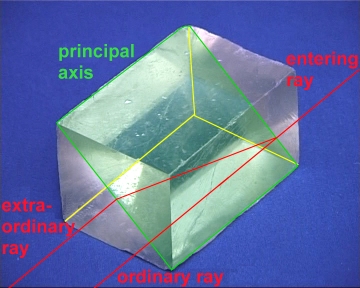
Fig. 4: Explanation of principal terms
Finally the observations are summarized and the final statement established:
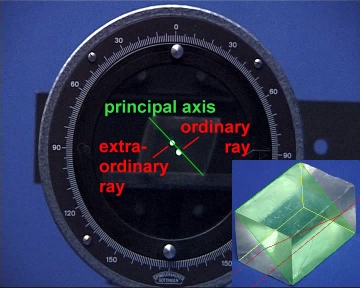
Fig. 5: Principal terms of the experiment with inserted calcite (see Fig. 4)
The video can be used in lectures and also in self-studies. Depending on its embedding in a teaching environment, it can be used at school and also in beginners´ courses at university.
| [1] | e.g.: a) Nave, C.R.: Hyperphysics, Department of Physics and Astronomy, Georgia State University, http://hyperphysics.phy-astr.gsu.edu/hbase/phyopt/biref3.html b) Higatsberger M.J.: Physik in 700 Experimenten, Experiment 675, Institut für Experimentalphysik, Universität Wien, http://mailbox.univie.ac.at/~higatsm4/higatsberger.html |
| [2] | See for example: a) D. Halliday, R. Resnick: Physics, 4th extended Edition, New York: John Wiley & Sons, Inc., 1992 b) Gobrecht, H. (Hrsg.): Bergmann – Schäfer – Lehrbuch der Experimentalphysik, Band III: Optik, 8. Auflage, Berlin: Walter de Gruyter , 1987. c) Meschede, D.: Gerthsen Physik, 21., völlig neubearbeitete Auflage, Berlin: Springer, 2002. |